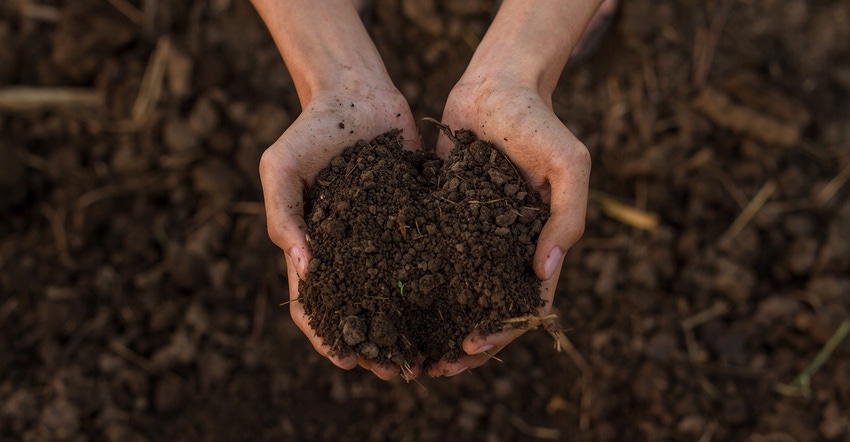April 1, 2022

Sponsored Content
Soil is a complex ecosystem that is teeming with microscopic life the naked eye can’t see.
“What's novel about soil health is that, like human health, there's a living component to it,” said Carl Bruice, Willbur-Ellis Agribusiness national nutrition technical manager.
Soil health is a long-term investment, and even modest improvements to areas of the soil microbiome can translate into benefits that directly influence your bottom line. One area you can impact now is soil fertility. By addressing imbalances in soil fertility, you can help improve the soil microbiome, which can lead to healthier soil and ultimately help reduce the need for fertilizer inputs.
Improving soil fertility contributes to healthier soil
“Good fertility practices maximize production to the grower's benefit, and it maximizes the overall quality of a grower's soil,” Bruice said. “With the adoption of reduced till and no-till practices, we are seeing a gradual increase in soil organic matter. And that's an especially important component of fertility.”

Organic matter is the energy source for soil microbes, which promote the growth and establishment of a robust root system.
By increasing organic matter, the soil will have more natural fertility – potentially reducing the need for supplemental fertilizer.
Southwest farm soil, however, is low in organic matter. Understanding how to boost organic matter has researchers digging into soil biology and chemistry.
Soil biology
“Understanding soil health from a biological standpoint is fairly new,” said Dr. Greg Binford, Wilbur-Ellis director of advanced agronomy training. “It's more difficult to measure, and we're only in the infancy stage of learning how to interpret biological soil tests.”
Part of the difficulty Binford sees is that both negative and beneficial microbes are present in the soil. Negative microbes can attack root systems, while beneficial microbes help stimulate plants and solubilize nutrients. More research is needed to understand how these microbes interact with each other and how to promote microbial balance.
Binford and other Wilbur-Ellis agronomists are working with Trace Genomics to measure biological responses of soil bacteria and fungi. These soil tests assess the response of NUTRIO® a biological inoculant, which is essentially a dose of beneficial microbes.
Results are promising.
“We've taken the microbes in the soil that are known to be plant growth promoting rhizobacteria,” Bruice explained. “They tend to produce compounds that can stimulate a better rooting structure, but they also help solubilize nutrients.”

Soil chemistry
While soil biology is a relatively new field of research, soil chemistry has been extensively researched over decades. University and on-farm trials provide clear parameters for aligning chemical properties such as pH, salinity, nitrogen and phosphorus with desired yield goals.
In addition to traditional fertilizers, many university studies have shown the benefits of humic acids in nutrient availability and root growth.
Humic acids are the engine of soil organic matter and humus, according to Bruice. They have a net negative charge that helps keep positively charged nutrients available to plants. Products such as PURIC® increase nutrient uptake, root mass, soil buffering capacity, water holding capacity, potential yield, cation exchange capacity, soil structure, soil microbial activity and foliar shoot growth. Through these benefits, your soil’s fertility will begin to improve, which means soil health will improve.
“Good fertility is one of the first things we can do to maintain good soil health,” Bruice said. “Proper fertilization practices, knowing your crop's nutrient demand curves, and applying nutrients timed at peak demand to minimize waste and maximize nutrient uptake efficiency are all really important.”
To get started or take the next step in your soil healthy journey, Bruice and Binford recommend soil testing and working with a soil health expert.
About the Author(s)
You May Also Like




